"Is that a pot plant?"
In most circumstances, the question above doesn't rank too highly on the list of things you'd like to be asked. This is especially true if that plant is yours, growing on your property, or if the person asking the question is a police officer.
Unfortunately - and due to terribly unfair, unjust, and downright childish legislation - many people around the world are forced to act against the law to cultivate the cannabis plant. Keep in mind, this is a plant that's proven to be a highly effective tool for battling a wide variety of medical conditions, ailments, and diseases. It's also been proven to be very useful as a source of inspiration, creativity, and tranquility for who knows how long. Probably millennia at least.
Let's try to put things into perspective - let's imagine for a second that tomatoes were illegal. It sounds silly, right? Well, imagine you had tomato plants secretly growing in your garden or maybe in a flower bed next to your storage shed. You decide to show your illegal crop to a friend one day, who immediately exclaims "Holy shit, are those tomatoes?!"
You respond with a proud smile and a stern "Don't tell ANYBODY about these! They're beautiful though, aren't they?"
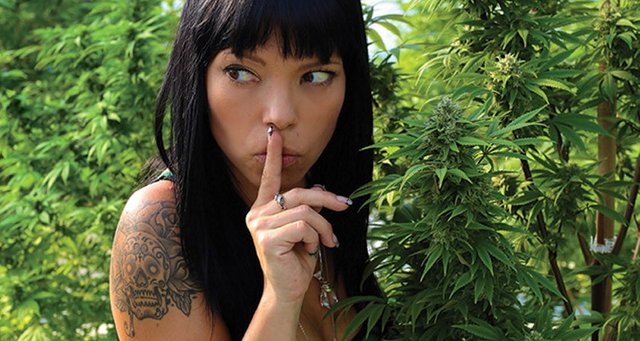
While it sounds ridiculous and far-fetched, the situation with cannabis is truly no different. Tomatoes don't exactly have psychoactive properties but regardless, they're still a plant. They are nature. They're an integral part of our eco-system that we as inhabitants of the earth should be free to use responsibly, and as we see fit. Cannabis has so many overtly beneficial uses - from medical to psychology to material - that labeling it as dangerous, illegal, and classifying it as a schedule 1 drug (which according to law puts cannabis it on par with raw heroin) is nothing short of an insult to intelligence. It speaks volumes about the dysfunctional state of politics, education, and social engineering. It's totally unacceptable.
Breakin' The Law, Breakin' The Law
If you've decided to cultivate your own cannabis plants, you've decided to break the law. Everyone who has ever smoked cannabis has broken the law, as has anyone who ever bought, sold, or touched it. It's a sad truth. Most of us are mature enough to understand the ethical conundrum we're presented with here. We understand that cannabis prohibition is highly immoral and cruel. Nobody wants to be be punished for it, yet we still want to use it. Furthermore, we value the plant enough to risk the consequences of growing and using it. It's a tough situation.
Anyway, enough about morality - I think we can all a agree that it's important to employ discreet methods of growing cannabis. Let's get into the nitty-gritty stuff, or, the sticky-icky, if you will.
Camouflaging Your Cannabis
When it comes to camouflaging cannabis outdoors, there's a myriad of techniques and possibilities that can be put into play to reduce the chances of detection. In fact, some of them are so effective that I've seen people standing within an arm's length of cannabis plants without a single clue that one was anywhere in the vicinity. Furthermore, those people were smokers who could normally identify the plant.
Some methods are more effective than others. Some require more work, planning, and care. Some may seem a bit ridiculous and/or go against traditional methods of cultivation, but that's not important. We're not here to supply marijuana to the whole neighborhood for the next 6 months. We're here to learn to effectively hide a couple plants (enough for a personal use stash) from nosey neighbors, prying eyes, the guy who sneakily comes in your yard every month to read your electrical meter, and the punk teenagers next door who'd probably rip your plants if they knew about them.
Hiding Your Plants With Plants
One excellent method for hiding cannabis plants is to use other species of plants. Of course this is common sense when growing in the wild, but what about in your own backyard? What do you use? How do you prevent it from standing out? What if someone goes near them?
Luckily for us, nature is diverse. There's an abundance of plants and flowers that do an exceptional job of camouflaging your cannabis due to their colors, structure and growth characteristics. Some of the best and most readily available species are mentioned below. Find them, get them, and use them to your advantage.
Staghorn Sumac (Rhus typina)
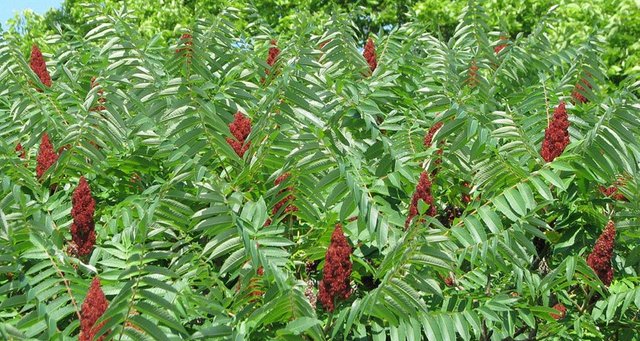
Staghorn Sumac has long thin branches with characteristics similar to a fern. They start small and looking very much like a fern, then mature with a more stout stature which can be shaped like a hedge or trimmed to grow like a tree. It has unique budding tops resembling the flowers of mature cannabis and the finger-like leaves do a great job of hiding it, especially thin-leaved sativa strains. The intermediate green color makes them ideal for masking both bright and darker colored cannabis plants.
Although Sumac, they are not poisonous like poison sumac. They are readily available in seed packets for under a buck. They're best used with cannabis when kept short, or when grown normally and the accompanying cannabis is trimmed to mimic the mature shape of the larger Sumac.
Ragweed and Giant Ragweed (Ambrosia psilostachya and Ambrosia trifidia)
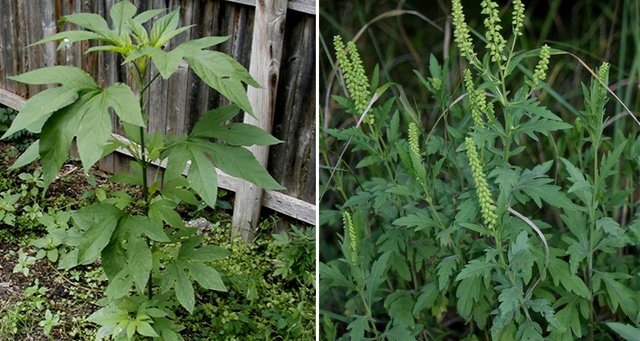
Ragweed is a very common, readily available species that draws little attention but does a wonderful job of masking a cannabis plant. This is best used in a corner of your yard, up along a fence line, or near a brush pile. They're great for wherever someone could normally expect to see weeds growing. It's also great for masking cannabis in longer grass, or in a lightly wooded area. The wild structure of ragweed, both in it's early and later growth stages, should not be underrated when considering its usefulness as a disguise.
Pride of Madeira (Echium fastuosum)

This plant does a phenomenal job of keeping your cannabis plants hidden, especially during the vulnerable flowering stages. Originally it's a perennial from the tropics but that doesn't stop people from using it in a variety of climates. Further, it's a real stunner! The beautiful flowers are large and lush. The leaf structure is medium-thin, stacked, and so similar to cannabis that the two will blend flawlessly. This plant is readily available and seeds are inexpensive. It will grow practically anywhere, including in climates as far north as Canada. Additionally, it can withstand minor frosts, making it an excellent choice for cannabis security. Choose a mold-resistant cannabis strain since this plant can really hold moisture and humidity.
Cleome (Cleome spinosa)
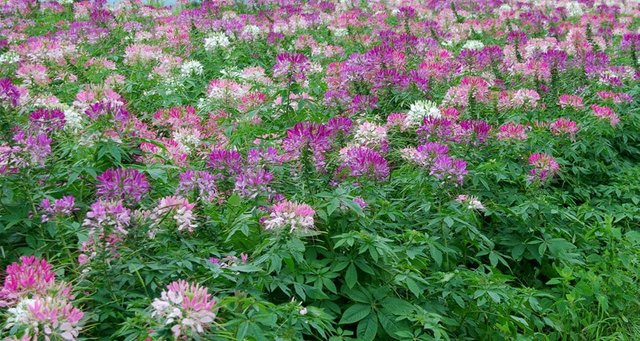
Cleomes are an excellent and decorative choice, especially for camouflaging indica and indica-dominant strains of cannabis. The broad, wider, overlapping & layered leaf structure of these flowers will allow most indica strains to go totally undetected. If your cannabis is kept short, it's easy to mask several plants with just a small patch of cleome. They blend in perfectly and as a bonus, cleome are rather pretty to look at. The flowers stand up above the plant's leafy area, directing the eye away from your cannabis. Seeds are readily available and cheap. Be sure to choose a type of cleome with leaf characteristics like the ones pictured above, as there are various breeds in circulation.
Lupin or Lupine (Lupinus)
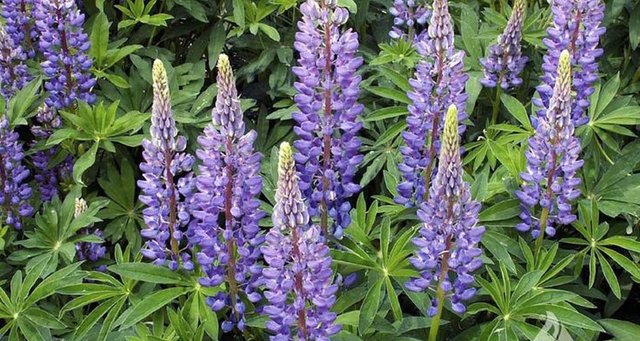
There are literally hundreds of types of lupines, and they all share a similar basic structure. The leaf shape resembles cannabis yet it's not serrated and so the lupine works wonders at keeping your plants hidden without anyone thinking the lupine itself is a cannabis plant. Readily available and easy to grow, they work well for masking both sativa and indica strains, especially those with medium to dark colored characteristics. Lupines can be planted in pots, beds or planters and are easy to maintain.
Stinging Nettles (Urtica dioica)
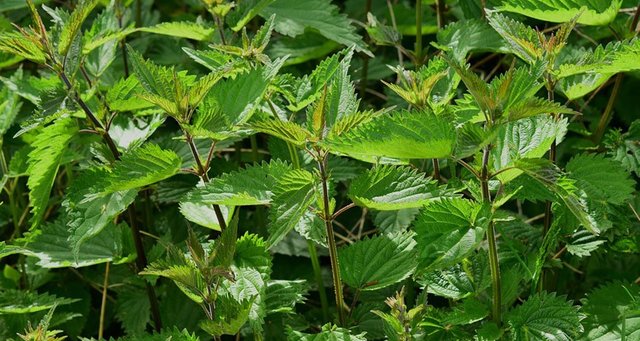
If you know what stinging nettles are, you probably know to stay away from them. They're not poisonous but as the name implies, they can cause a stinging sensation and irritate the skin. They look like an unpleasant weed you wouldn't want to brush up against. They also do a great job of camouflaging cannabis due to their shape and growth characteristics. The space between nodes and serrated leaves are an important factor here.
Hide your cannabis behind a few stinging nettles in a corner or along a fence line and nobody's going to know any better. Their height and structure does an outstanding job of masking the cannabis and creating an unwelcome barrier, yet they're not too thick or bulky to block out precious sunlight.
Miscellaneous Plants & Flowers
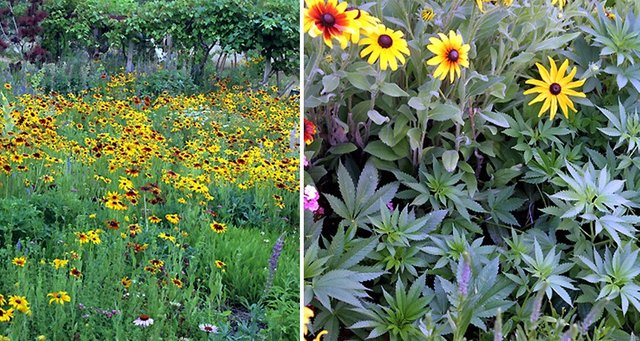
Other plants that excel at hiding cannabis and keeping unwanted intruders (including animals) away are thorns, thorny bushes, sticker bushes, raspberry and blackberry bushes, mixed wildflowers, sunflowers, certain types of bamboo, sugar cane, sawgrass and corn. Just check out the image above and notice how easy it is to hide a shortly pruned indica strain among wildflowers.
Some people even go to the extreme of growing their cannabis in trees (yes, in trees) which is an interesting subject in itself and one I'll write more about in a future post. When making your decision, don't only choose plants and flowers that look similar to cannabis. Instead, look for variables that will help make cannabis less detectable such as color, size, branch arrangement and leaf orientation. We're not trying to hide our cannabis under a canopy, we're trying to get it lost within the other plants without eliminating the ability for sun penetration and air flow.
Training and Growing Low
There's a variety of ways to "train" cannabis. It's a very responsive plant and as long as it has water and sunlight, it's actually hard to screw up once it passes the seedling stage. It's also very forgiving. Training cannabis is no different than training a tomato plant and there are several ways to do it. You can use fencing, stakes, cages, pipes, string or even rocks to tie cannabis down as it grows, keeping it as close to the ground (or a fence, trellis or any other chosen structure) as possible.
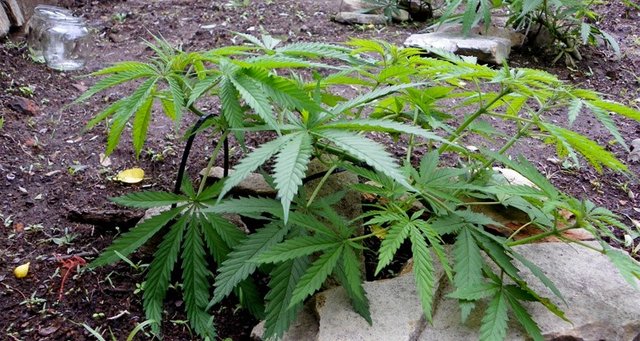
In combination with training, it's possible to keep your cannabis super short and inconspicuous by carefully trimming and pruning excessive growth.
You're only limited by your imagination, and as long as you're not removing more than 30% of the plant matter by trimming, you should be fine. Just be sure to give your plant time to recover and resume growth before trimming again. Restricting container size is another great way to limit growth and something that many employ to keep plant size reasonable.
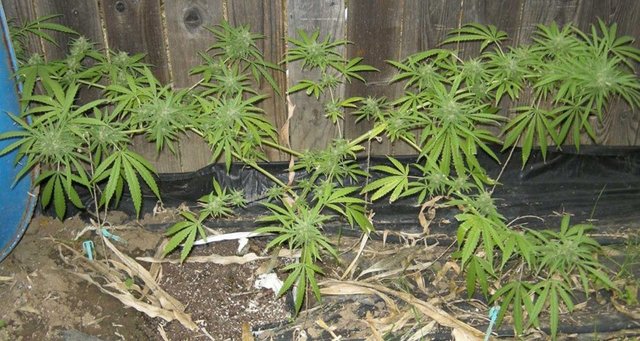
A sativa strain grown small and trained low & wide doesn't even require any camouflage.
Also understand that overall yields can be affected by plants that receive too much stress and not enough time for proper growth before flowering. In many cases, trimming and pruning is used to increase yields but in our case we're only trying to limit and control the growth. Reaping slightly less at harvest time is a totally acceptable sacrifice for the ability to grow discreetly.
Defoliation
Defoliation is a controversial technique among growers. Without getting into the details, it's important to know that under no circumstance should you remove all the leaves from your plant. With that being said, larger leaves (including fan leaves) can be removed and the plant will continue to grow and flourish. While the leaves definitely serve a purpose, it's completely possible to produce high quality buds with a minimal amount of them.
As a method of extreme camouflage, some growers will remove blades from each leaf or even trim the leaf tips to a blunt shape, altering the signature appearance that makes cannabis so noticeable. I have seen growers cut every blade from every leaf except for the central main blade, rendering it totally unrecognizable as marijuana. This is not recommended for the inexperienced, but it goes to show the versatility and flexibility we have with this amazing plant.
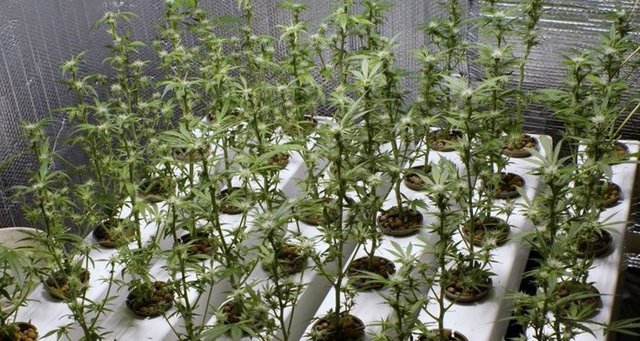
Heavily defoliated cannabis is barely recognizeable.
When cannabis begins to mature and reaches the flowering stage, defoliation can be performed more aggressively. Done correctly, it can alter the plant's appearance and eliminate the telltale characteristics of a cannabis plant such as the massive fan leaves. When used in combination with trimming or pruning, defoliation can help mold a plant whose structure is radically different than the shape we're used to seeing.
Combination Methods
Through different combinations of trimming, training, tying and masking with other species of plants and flowers, there are seemingly endless ways to hide your cannabis plants. Brush piles, bushes, compost heaps, lawn decorations, fallen tress, thorn bushes, stacked wood, and tree lines are all great places where cannabis can be easily hidden from sight. Sometimes you might find that you have a hard time spotting the plants yourself!
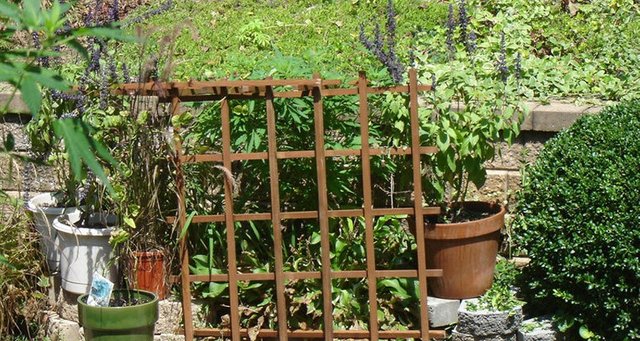
Medium-sized cannabis plant rendered nearly invisible when masked with a basic wooden trellis.
For example, with stinging nettles as a disguise, you might be able to grow a lengthy sativa strain in a 3 gallon pot. With the same situation and a little training you might be able to use a larger pot while keeping the height down for a better yield. It's all up to you, your available space, and your personal preference.
If you're extremely limited on space, you can even employ super-stealth methods that can work wonders for a small courtyard, balcony, or rooftop such as in the pictures below.
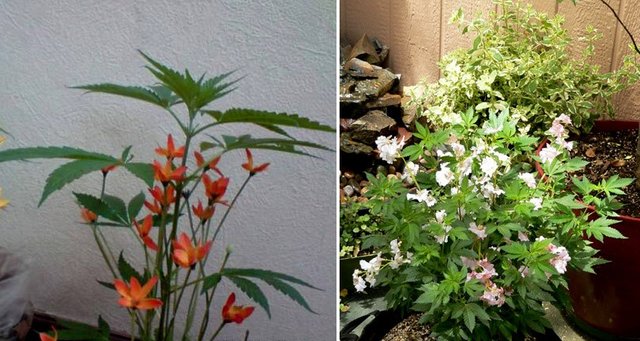
Cannabis disguised with fake flowers make it extremely inconspicuous.
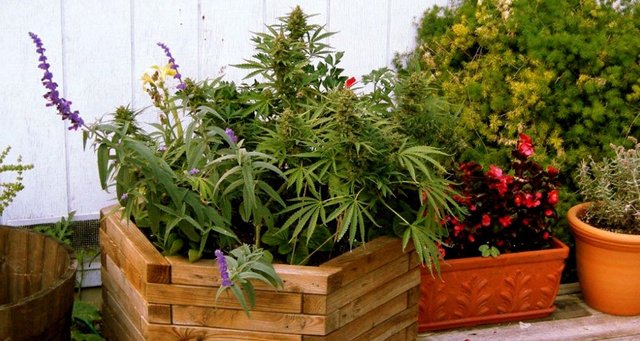
A small, neatly trimmed plant in a basic planter goes easily unnoticed when done correctly.
Whatever your preference may be, it's wise to know what strain you're planning going to grow before you start. This will give you an idea of the plant's general size, rigidity, stress resistance, and yield. Incorporating the wrong strain (or a difficult strain) with the wrong camouflaging methods, improper growing conditions and bad technique could result in plants that are hard to hide, extremely low-yielding, or simply won't make it. It's up to you to do a bit of planning before you get started, just as you would in any other endeavor.
As I've already mentioned, the possibilities are endless. This is a plant - naturally occurring - that you deserve access to. It's your choice, your decision and your right - nobody else's. Growing your own cannabis can be a very enjoyable and rewarding experience. I hope this information has opened your eyes to the different methods available to help you safely and securely harvest your own.
Please keep in mind that I don't know where you live and/or what your local laws are in regards to cannabis. This is for informational purposes only, and I urge you to make your own decisions as an informed & capable adult. I am not promoting or encouraging you to take part in illegal activity.
Or move to Portland Oregon and simply grow it outside like everybody else. no worries! ;)
Downvoting a post can decrease pending rewards and make it less visible. Common reasons:
Submit
Actually this is pretty awesome tips!!
Downvoting a post can decrease pending rewards and make it less visible. Common reasons:
Submit
Word, i was about to say
Downvoting a post can decrease pending rewards and make it less visible. Common reasons:
Submit
Love love love! Sharing on twitter!
Downvoting a post can decrease pending rewards and make it less visible. Common reasons:
Submit
Thanks so much!
Downvoting a post can decrease pending rewards and make it less visible. Common reasons:
Submit
A master of disguise! Good job!
Downvoting a post can decrease pending rewards and make it less visible. Common reasons:
Submit
We use christmas ornaments that look like tomatoes. Been growing for 30 years and never had a problem. Many people see red tomatoes and never see the pot plants. They assume they are tomato plants
Downvoting a post can decrease pending rewards and make it less visible. Common reasons:
Submit
A family member does something similar. Foam tomatoes would be a great one too.. Thanks for reading and sharing your tip!
Downvoting a post can decrease pending rewards and make it less visible. Common reasons:
Submit
https://steemit.com/cannabis/@photohunter/some-frosty-buds-i-grew-from-bag-seeds-last-winter
Purple plants camouflage themselves :D
Downvoting a post can decrease pending rewards and make it less visible. Common reasons:
Submit
Yes I know someone who grows his where outside of the city where I live. But it's probably not grown properly because of chemicals that was sprayed...

Downvoting a post can decrease pending rewards and make it less visible. Common reasons:
Submit
With the make believe 'legalization' of cannabis that the Turdeau - correct spelling - government is imposing here in Canada, every word you've written will soon be essential reading for literally millions of Canadians. That's bad enough. But handing over control of the so-called 'emerging Canadian cannabis industry' to former cops, Liberal Party hacks and bagmen, ex-politicians from all parties but the Greens, pharmaceutical drug lords and the like, is grounds for resistance and civil disobedience on a mass scale. Great post, highly practical and clear.
Downvoting a post can decrease pending rewards and make it less visible. Common reasons:
Submit